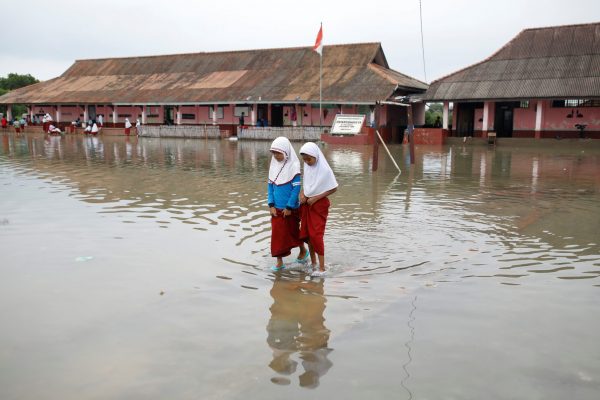The Paris Agreement was adopted in December 2015 and entered into force the following year. It is the latest of various multilateral endeavours to tackle the issue. All countries that signed the Paris Agreement are required to set emissions targets and implement policies to achieve them. The ultimate aim is achieving net zero greenhouse gas emissions by the end of this century.
Asia is currently the largest regional contributor to the problem and emits more than 40 per cent of global greenhouse gases. The ways in which Asian countries respond to the problem differ extensively, because Asian countries’ national circumstances — such as emission sources and levels of economic prosperity — are diverse.
Japan — one of the wealthiest countries in the region — is responsible for around 3 per cent of global emissions. More than 90 per cent of Japan’s emissions come from fossil fuel combustion. For Japan, climate change policy is nearly equal to energy policy in its importance. Japan intended to reduce its emissions over decades, mainly by increasing nuclear energy as a proportion of the country’s power supply, but this was nullified in March 2011 by the Fukushima Daiichi nuclear power plant accident that was caused by the East Japan Earthquake. Only after the incident did the Japanese government start supporting the use of renewable energy.
Japan announced an emissions reduction target for 2030 of ‘a 26 per cent emission reduction from 2013 levels’ under the Paris Agreement. This target assumes that nuclear power will supply 20 to 22 per cent of total electricity by 2030, with renewable energy supplying 22 per cent to 24 per cent. There is still strong public opposition to the use of nuclear power, and the Japanese government has not explained how it plans to achieve this target if it fails to convince the public to allow the lives of existing nuclear power plants to be extended.
Japanese industries and individuals prefer inexpensive energy. Coal is considered the cheapest source, and since January 2016 the government has approved construction of more than 20 new coal-fired power plants to replace nuclear power plants. Japan will not be able to reach the 2030 emissions target if the rest of the coal-fired power plant building plans are all approved. Supported by heavy industry, the current Abe administration is reluctant to abolish fossil fuel power plants altogether.
Indonesia’s unique climate-change-related problem is deforestation. Emissions from land-use changes — particularly forest burning to clear forests for cultivation and the resultant underground peatland fires — account for around 60 per cent of total emissions in Indonesia. In addition, Indonesia is rich in fossil fuel resources, and low energy prices and high population and economic growth have led to a rapid increase in energy consumption.
Indonesia’s emissions target for 2030 is twofold: an unconditional target of 29 per cent below business-as-usual and a conditional 41 per cent reduction below business-as-usual with sufficient international support. To achieve these targets, most action is being taken in forestry and other land-use sectors. Indonesia’s emissions targets may be effective in decreasing the speed of national deforestation, but perhaps not in reducing emissions from fossil fuel combustion.
In many other countries in Asia, emission reduction policies are utilised as tactics to fulfil other national objectives. For instance, China supports industries associated with the manufacture of solar photovoltaic panels and electric automobiles as a way to foster new industries and increase exports. India is expanding its use of renewable energy to supply electricity to poor and remote areas.
In June 2017, US President Donald Trump announced that the United States is prepared to withdraw from the Paris Agreement. Although the Paris Agreement will only allow withdrawals to occur after November 2020, the world watched how other countries responded to the announcement. Unlike in 2001, when then US president George W Bush withdrew from the Kyoto Protocol, this time no country expressed sympathy for the United States. Instead, all countries — including those in the Asian region — attempted to convince the United States to return to the Paris Agreement regime. For most countries, the reduction of greenhouse gas emissions has now become a new paradigm that guides the design of national development pathways.
In terms of regional cooperation in Asia, greater focus is needed in the area of adaptation responses to minimise the adverse impacts of climate change. Enormous typhoons, heavy rainfall events and the accompanying floods have begun to affect many Asian cities. Disaster management at the regional level could be a meaningful avenue for enhancing regional cooperation in Asia.
Yasuko Kameyama is Deputy Director of the Center for Social and Environmental Systems Research at the National Institute for Environment Studies, Japan.


Regarding “There is still strong public opposition to the use of nuclear power, and the Japanese government has not explained how it plans to achieve this target if it fails to convince the public to allow the lives of existing nuclear power plants to be extended.”
In Japan this week ThorCon explained to parliamentary members how liquid fission technology with hybrid thorium/uranium fuel can provide Japan with meltdown-safe, zero-CO2 power sources.
Regarding “Indonesia’s emissions targets may be effective in decreasing the speed of national deforestation, but perhaps not in reducing emissions from fossil fuel combustion.”
Indonesia is working with ThorCon to supplement its coal-fired electric generation with new, liquid fission power, as described in the same presentation.